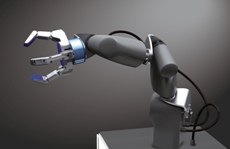
Significant amount of the scientific and technological advances achieved by humanity in the modern world was made possible by automation and the existence of precision motion control systems.
Automation is a progeny of early feedback control technologies that developed during the Industrial Revolution. It reached new heights during the Digital Age, when computer technologies began enhancing its capabilities. Today automatic processes are typically achieved with the help of motion control systems that integrate these information and networking technologies—truly smart machines for the modern era.
Motion control systems come in a variety of forms, but their main components usually include a motion controller that produces the control signal, an amplifier that converts hydraulic, pneumatic, or electric control signal from the motion controller into energy, and an actuator that uses the energy and transforms it into mechanical action. Often, motion control systems make use of actuation components like rotary and linear stages, which are used to constrain payloads to a single axis of rotation and translation, respectively.
There are many possible applications of motion control systems in various industries. These include:
Microscopy
Microscopy is the science of using microscopes, an instrument that makes the visualization of very small objects possible. A typical application of precision linear actuators and stages is to control the focus of a microscope objective, which is the component used to observe the samples. Microscopes themselves are used in a variety of fields, including the natural and physical sciences, forensics, diagnostics, and the manufacturing of integrated circuits.
Laser cutting and laser beam machining
Laser beam machining is the use of laser beams to cut, engrave, or mark materials for manufacturing applications. As the laser needs to be precisely focused on areas of the work pieces that need to be machined, they require precision motion control systems, which deliver the beams exactly where they are needed.
Photonics and optics
Very important scientific fields like photonics and optics also rely on instruments that have integrated motion systems. Photonics is the technical field that studies the production, detection, and manipulation of light in general, while optics explores the behavior and properties of light. These fields are responsible for the development of many modern devices that we know today, from fiber optic cables, printers, and DVD players to metrology instruments, laser eye surgery equipment, and military infrared sensors.
Automated liquid handling
In the field of life sciences and diagnostics, liquid handling is one of the most basic processes that are carried out by scientists, researchers, and laboratory technicians on a daily basis. The laborious procedure of pipetting and dispensing great quantities of minute amount liquids can be achieved faster and made more efficient through automatic liquid handling, which is made possible by robotics with integrated motion control systems.
Motion systems are indeed an important part of modern robotics and industrial machines. With their help, we can continue creating more devices, instruments, and consumer good that will help us improve our lives.
Related posts:






